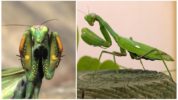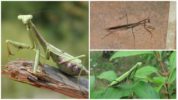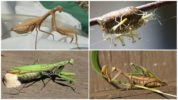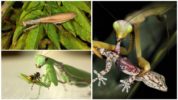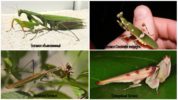- Mantis
- Mantis Color
- Mantis breeding
- Mantis Food
- Species of Mantis
On our planet, there are more than 2400 species of mantis, all of them have a common ancestor with cockroaches and termites. Studies show that the mantis insect came from one species of the ancient beetle, and from the point of view of evolution, they are relatively young, the first fossils date from the Cretaceous period. Most mantis beetles are known for the unusual behavior of the female during mating, but this insect has many more secrets.
Why is an insect called a mantis
The official name of the beetle was given by the famous scientist-naturalist from Sweden, Karl Liney, in Latin it sounds like "Mantis religiosa". The translation literally means “religious priest,” and the shorter one, the mantis, has come into our everyday life.
Interesting!
In 1758, the scientist watched insects for a long time in the tropics, where he noticed a beetle gracefully sitting in an ambush. The forelegs were folded as if he were praying in a temple, hence the name came from.
But in addition to the academic name, the insect has other nicknames:
- in Spain he is called the devil’s horse or death;
- orchid-like insects are called orchid insects.
In each locality, the mantis is called in its own way, it is simply impossible to list everything within the framework of one article.
Structure and characteristics
It is impossible to confuse the photo of the mantis with other insects; certain structural features are peculiar to it. Some still believe that the beetle is an alien creature, since some of its characteristics are unique and unusual for terrestrial insects.
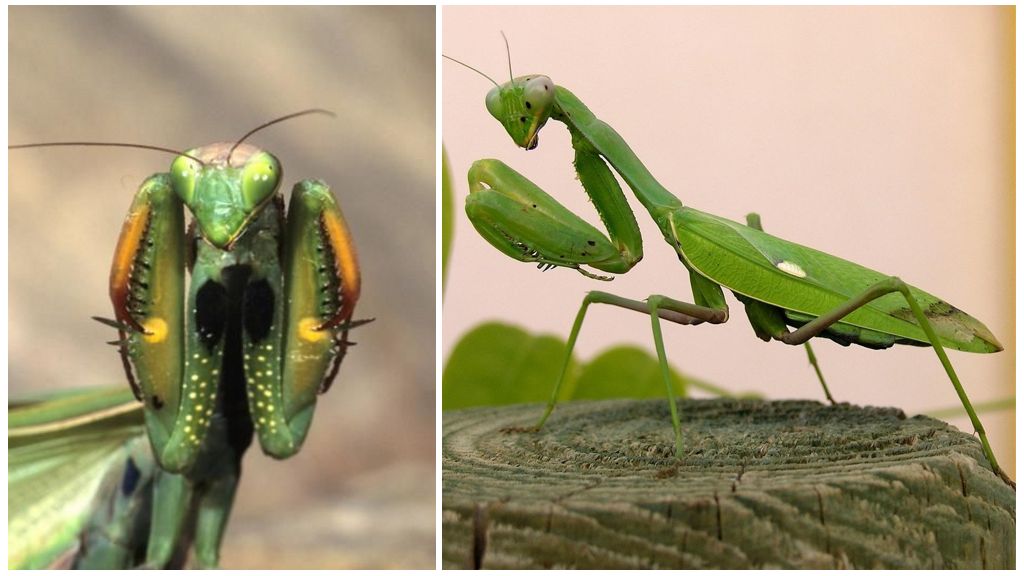
All representatives of the mantis are united by such characteristics:
- first of all, it is an elongated body shape, which is not characteristic of other arthropods;
- his head shape is triangular, and the beetle can rotate it 360 degrees;
- the mantis has one ear, but the hearing is very good;
- mantis have five eyes - two are located on both sides of the head and three more between the antennae;
- antennae themselves can be different, it all depends on the species, there are insects with comb, filiform, cirrus;
- two pairs of wings are developed in almost all species of mantis, however, only males use them more often;
- insects have well-developed forelimbs, the structure of which is not simple, the components are the same for everyone: trochanter, thigh, lower leg and legs;
- the insect's circulatory system is primitive, the reason for this was the unusual respiratory system, which consists of the trachea system.
These are the main characteristics, further each species is individual, taste preferences will unite them and boldly fight with the enemy.
Dimensions
The size of the mantis is different, but usually the female is larger than the male, which allows her to do this with him during mating. It is in size that the external sexual difference is manifested.
Interesting!
Ischnomantis gigas recognized as the largest species, reaching a length of 17 cm, this mantis lives in Africa. The male is slightly inferior in size to the female and can reach 14 cm in length.
Giant species of mantis live in a humid climate, the middle strip grows species of a small size, only up to 1.5 cm long.
Color
The insect adapts perfectly to the environment in which it lives and develops, a typical grass insect living among green shoots will have the same color of the body and legs. The earthen subspecies is brown, and orchid lovers are similar to the flowers of this plant.
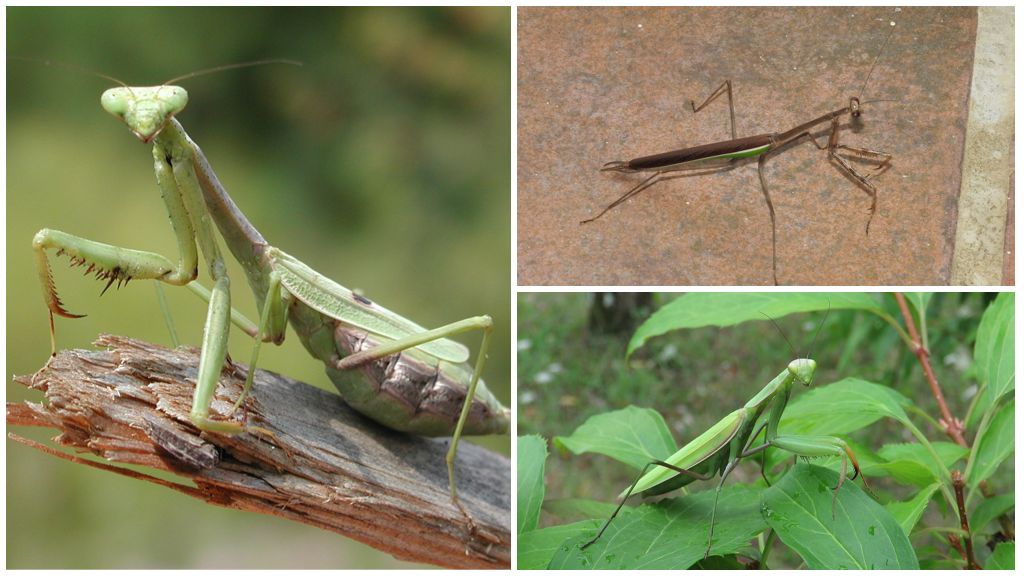
Each species has its own characteristic features in color, which make it possible to differ from other representatives.
Diet
The common mantis is not a typical herbivorous insect, but refers to carnivores. He is able to sit in ambush for a long time, and then abruptly attack his prey, which is larger than the insect in size.
In the diet of a mantis there are:
- flies;
- bees;
- mosquitoes;
- wasp;
- bumblebees;
- butterflies;
- beetles.
Larger representatives attack frogs, small rodents, and small birds. Mantis can eat their relatives, this is especially true during the mating season and the soldering period.
Interesting!
More than once there were recorded cases of attacks by praying mantis on hummingbirds, frogs and lizards, and mice.
For some animals, beetles themselves are food, they are hunted by birds, snakes, bats, as well as the mantises themselves.
Where does the mantis live?
An insect can survive under almost any conditions, therefore it is distributed throughout all continents of the globe, except Antarctica. The northern regions are unsuitable for life, but the reason is not at all in low temperatures. A poor forage base cannot provide the mantis with enough food; they will eat each other.
The best for mantis are considered tropics with high temperatures and relative humidity. That is why the tropical forests of South America, Africa, Asia have many varieties of beetles of this species. Stony deserts and steppe areas also contribute to the reproduction of the insect.
Breeding
Here, for many, the most interesting part begins; many know the facts that characterize the insect from a not very good side.
The total life span of an individual individual lasts no more than a year, for this short period the insect needs to grow, feed, protect itself from predators and be able to leave offspring after itself.
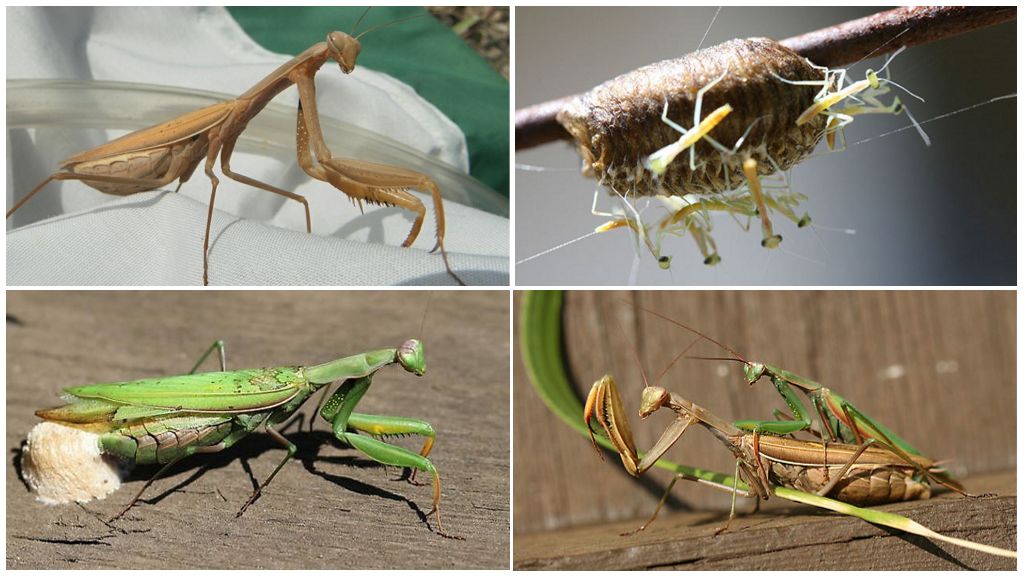
Mating season and mating
The mating season for mantis begins in the fall, during this period, the male with a sense of smell is looking for a partner, ready for mating. Previously, he performs a dance for the female, with which he demonstrates his full willingness and puberty. Only after this, the mating process takes place, in which the female bites her partner’s head without a drop of regret, often before the end of the procedure.
Interesting!
The partner’s eating is not due to the female’s dissatisfaction, thus the mantis replenishes the reserves of certain proteins in the body necessary for laying eggs and wrapping them with a special film.
Egg laying
After a certain period of time, the female will lay eggs, she usually does this in the winter. The insect envelops the offspring with a special sticky substance secreted by its own glands. In science, this substance is called ooteka, it is able to protect eggs from mechanical stress and protect it from various weather vagaries.
The larvae in the eggs are at different times depending on the species, this period lasts from 3 weeks to 6 months.
Important!
At one time, one female mantis can lay 10 to 400 eggs.
Developmental stages
Mantis do not immediately hatch from the eggs, before that there is another developmental period:
- in the laid eggs the insect larva develops until spring;
- hatching, the larva becomes a nymph, a reduced copy of its parents;
- after 4-8 links, the nymph turns into an adult insect.
Then the whole cycle repeats again, the male searches for the female, she bites and lays eggs.
Benefit and harm
Mantis as an insect brings more benefits than harm. His diet consists of pests, which he destroys in large quantities. But the bug can also cause harm, eating harmful insects, he does not disdain bees. Only a few mantis can exterminate a swarm of these beneficial insects in a short period.
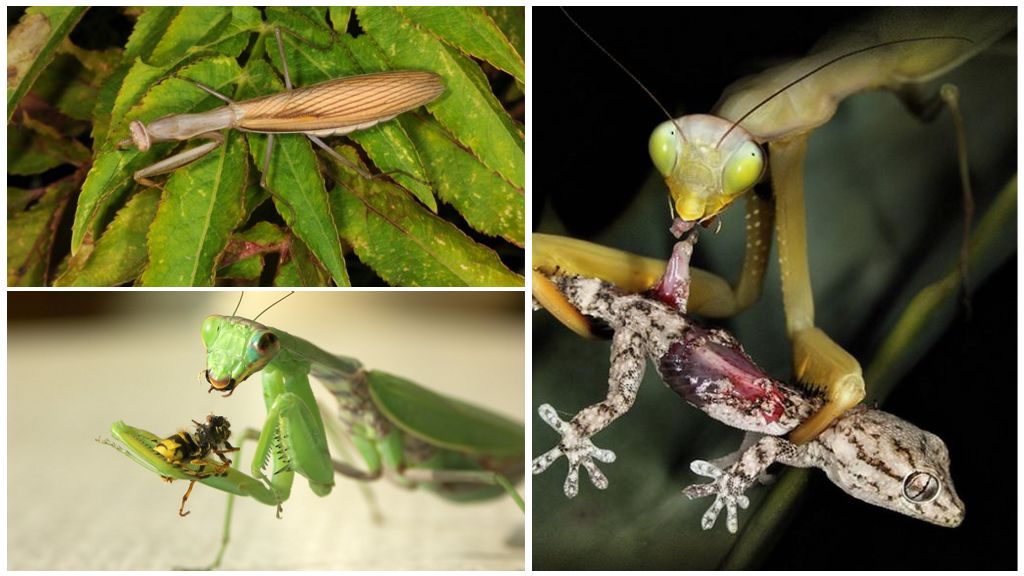
They found out how useful and dangerous the mantis is, but it is interesting to know what the representatives of this or that species look like. What features of the structure have, how do they differ.
Kinds
More than 2000 species of insect are officially described, the most interesting are presented below.
Common mantis
This species is the most common, insects live in Asia, Africa, Europe. Distinctive features are:
- larger than average, female reaches 7 cm, male 6 cm;
- individuals are green or brown;
- the wings are well developed, the flight from branch to branch is possible for every praying mantis, regardless of gender;
- the abdomen is ovoid.
A feature of the common mantis is the presence of a dark spot on the front pair of legs on the coxae from the inside.
Chinese mantis
The birthplace and place of permanent residence is China, which gave the name to the species. The color is combined, the insect has green and brown shades throughout the body. A special feature is an exclusively nocturnal lifestyle; in the daytime, the mantis sleeps. The wings are poorly developed, an adult individual passes several molts and only then acquires the ability to fly.
It is difficult to confuse the Chinese mantis with another species because of its outstanding size: the female grows up to 16 cm, the males are much smaller.
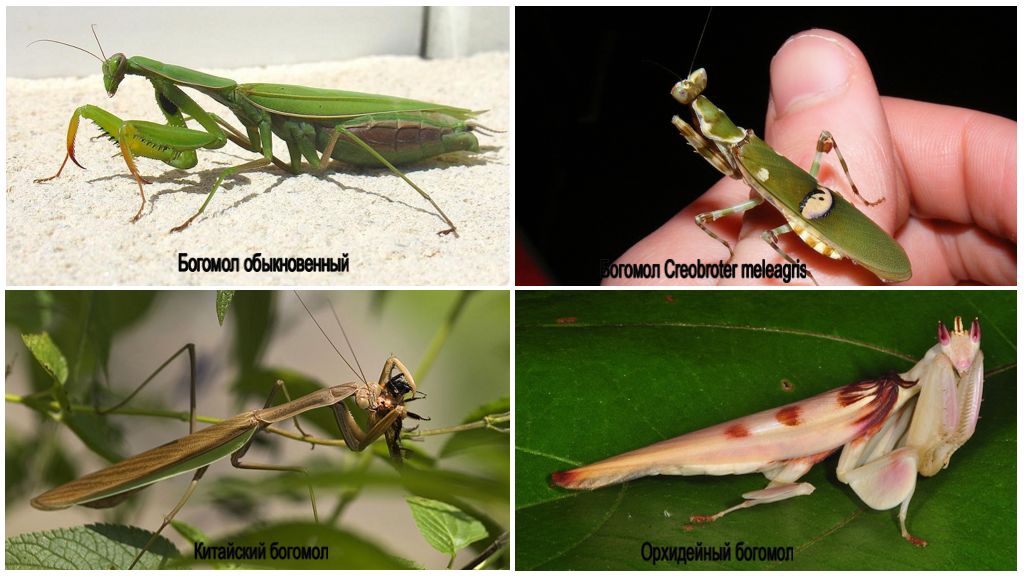
Praying Mantis Creobroter meleagris
The habitat of insects is southwest Asia, prefer moist forests. The length of an adult is not more than 5 cm, but the color is simply amazing: irregular-shaped strips of brown and cream color are located throughout the body. Mantis is allocated wings, each of which has one large and small spot of cream shades. A larger spot resembles an eye with a pupil.
Orchid mantis
The name itself speaks for itself, these flowers are a favorite habitat of this mantis. Insects are very similar to orchids, sometimes it is difficult to distinguish where the flower is and where the beetle is.
An important point will be the ratio of the sizes of the female and the male, the representative of the weaker sex is exactly twice as large.
Prickly Floral Praying Mantis
In southern and eastern Africa, you can find a similar insect to a mantis, only on its body there will be many thorns. These processes help the insect survive, the distinguishing features are color, the upper wings have a small spiral pattern, which some compare with the eye.
The insect mantis has a large distribution area and many species that will attract attention with an unusual color. And their help in the destruction garden pests just invaluable.
